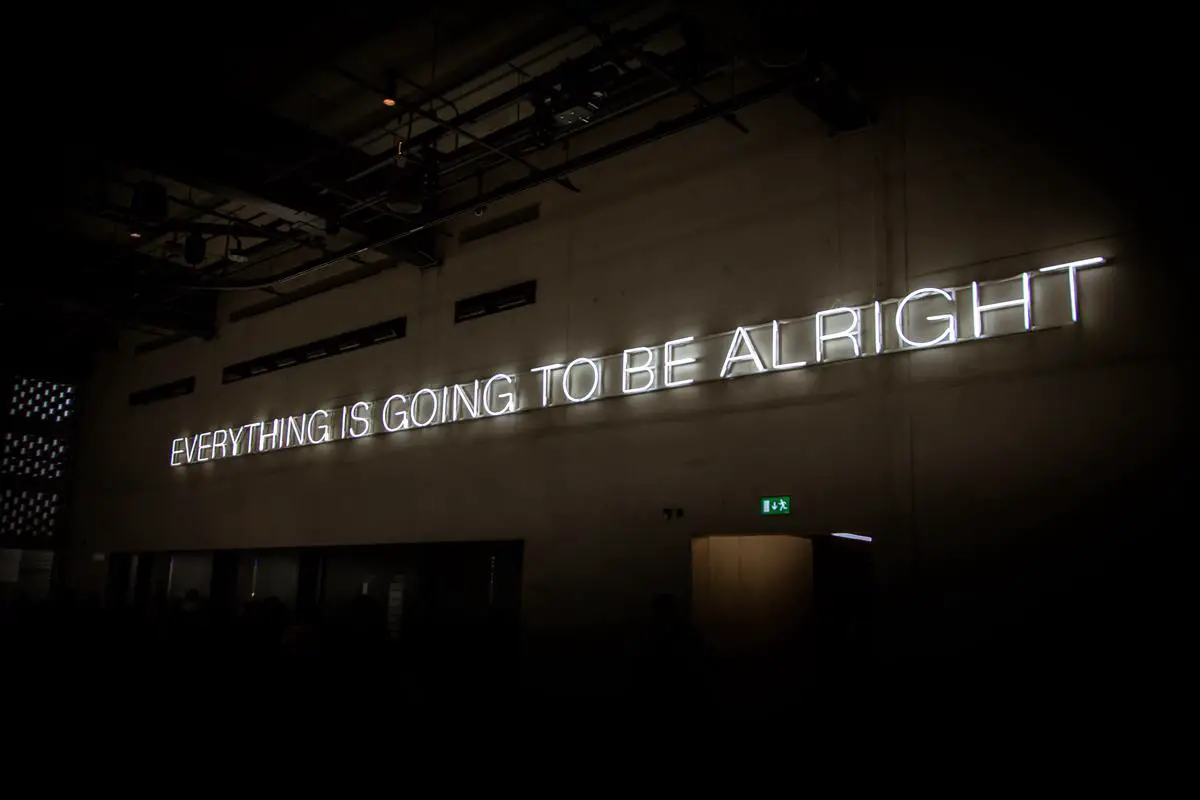Navigating the Use of the Verb ‘Need’ in British English
Understanding the intricacies of language not only helps improve one’s communication skills, but also provides rich insights into the varying nuances of differing expressions. Empowered by this belief, this discourse strays from the beaten path of conventional grammatical studies, leading an exploratory excursion into the diverse applications and contexts of the verb ‘Need’. From its use as a modal verb, peculiar features in negative sentences and questions to its comparison with ‘Have to’, and eventual journey into past and future tenses, the expedition promises deeper comprehension of this common, yet strikingly versatile word. Furthermore, we delve into the tantalising world of regional variations and accents, scrutinising their bearing on the interpretation of ‘Need’.
Understanding ‘Need’ as a Modal Verb
Exploring the Modal Verb ‘Need’
‘Need’, in its role as a modal verb, can function as both an auxiliary verb and a main verb. When used in this function, it is often applied to express necessity, obligation, or a requirement. In British English, the modal verb ‘need’ is typically preferred in questions and negative sentences such as ‘needn’t’. However, when it comes to positive statements, ‘need to’ is more commonly utilised than the modal ‘need’ itself.
Understanding the Application of ‘Need’ as a Modal Verb
As a modal verb, ‘need’ is best utilised to indicate necessity or obligation – it signifies something that must be done or an action that is necessary. It can also be employed to provide advice or recommendations, similar to the verb ‘should’. For example, saying “You needn’t worry about the test,” conveys that there is no necessity for concern over the test. Similarly, “Need I remind you of the deadline?” implies an obligation towards remembering the deadline.
Grasping the Different Forms of ‘Need’
It is vital to understand that ‘need’ exists in different forms, with the choice of form being dictated by its grammatical context. In the negative form, it is typically followed by an infinitive without the preposition ‘to’, such as, “You needn’t worry.” In questions, it is used with the bare infinitive, for instance, “Need we bring anything?” Regarding positive statements, ‘need to’ is commonly preferred, for example, “I need to finish this project.”
Unpacking the Past Form of ‘Need’
In a past context, ‘needed’ is applied as a regular verb. It is used to express a past necessity or obligation. However, the modal ‘need’ can also reference a hypothetical situation in the past while being used in the present tense. An example being, “You needn’t have brought a gift,” suggesting that while a gift was brought, it was not a necessity.
Comparing ‘Need’ and ‘Need To’
Whilst ‘need’, without the ‘to’, sees common usage in British English, American English typically favours ‘need to’. Although ‘need to’ and ‘need’ carry the same meaning, ‘need to’ finds more traction outside questions and negatives. Therefore, while “You needn’t worry,” would be usual for a British speaker, an American would probably say, “You don’t need to worry.”
Avoiding Pitfalls and Common Mistakes with ‘Need’
A frequent error made by speakers and writers is using the auxiliary ‘do’ with ‘need’ in questions or negative sentences. For instance, saying “Do I need to go?” is less preferred than “Need I go?” or “I don’t need to go” is less favored compared to “I needn’t go”.
This section has provided a thorough overview of the usage of ‘need’ as a modal verb in British English, reviewed both its regular and irregular forms, and tackled common errors. A parallel has also been drawn with its American equivalent, ‘need to’, to aid in understanding the subtle differences.

‘Need’ in Negative Sentences and Questions
‘Need’ in Negative Sentences and Questions
In the fabric of English grammar, ‘need’ is regularly used in negative sentences and questions to express an array of notions such as necessity, obligation, or requirements, depending on the context. The verb carries the flexibility to be used as either a main verb or a semi-modal verb, and it’s these subtle nuances that affect formality and meaning.
When functioning as a main verb in the negative form, ‘need’ is commonly conveyed as ‘do not need to’ or ‘don’t need to’. For example, “You don’t need to wake up early tomorrow.” It’s important to bear in mind that this structure does not necessarily denote strict prohibition but merely conveys a lack of necessity.
Alternatively, in its role as a semi-modal verb, ‘need’ takes on a more formal tone in negative sentences and is written as ‘need not’ or ‘needn’t’. This phrasing carries greater authority and provides a stronger sense of prohibition. For instance, if we were to say “You need not wake up early tomorrow,” it holds greater gravity than the main verb form, almost like a rule being laid down rather than simply a lack of necessity.
The Interchange between ‘Don’t Need to’ and ‘Need Not’
Though the contemporary British English generally leans toward the use of ‘don’t need to’, the use of ‘need not’ is not uncommon, especially in more formal styles of writing. But while the two forms are frequently interchangeable, there can be subtle implications that distinguish them. While both denote a lack of necessity, ‘need not’ implies that the negative action or outcome should be actively avoided. In contrast, ‘don’t need to’ can be seen as more passive, allowing for the possibility that the action might still occur without consequence.
Appearances of ‘Need’ in Elliptical Phrases
In addition to these usual applications, ‘need’ also frequently appears in elliptical phrases or sentences where some words are deliberately left out for brevity and conversational ease. For instance, in the question, “Need I say more?”, ‘need’ is used in place of the longer form “Do I need to say more?” In this instance, ‘need’ alone serves to create a more colloquial feel reflective of natural spoken English. Additionally, ‘need’ can also appear in rhetorical questions like “Need we remind you?”, thus adding emphasis and rhetorical punch.
The Nuances of Utilising ‘Need’
Overall, the verb ‘need’ serves as a flexible instrument within the realm of English grammar that can be carefully manipulated and modified to fulfil various functions across diverse contexts. Mastery over its subtle nuances – encompassing formality, sense of urgency, and implications – can tremendously aid in understanding ‘need’ on a deeper level. By doing so, a grammar enthusiast can become more adept in the language, its regulations, and the intricate art of linguistic subtlety.

Photo by paolobendandi on Unsplash
‘Need to’ Versus ‘Have to’
Delving Deeper into the Verb “Need”
The verb ‘need’ essentially conveys notions of necessity or obligation, akin to ‘must’ or ‘have to’. The usage of ‘need’ is dictated by factors such as urgency, significance, or personal necessities. Predominantly, ‘need’ establishes a situation that compels somebody to respond or take action. In the structure of an English sentence, ‘need’ is typically followed by an infinitive, for instance, ‘I need to return home,’ implying that it is compulsory for the person to return home.
The nuance of ‘Need to’
The phrase ‘need to’ is often more personal compared to ‘have to’. This phrase primarily refers to a personal obligation or something necessary for the individual concerned. For instance, ‘I need to eat’ suggests a more personal compulsion, often resulting from hunger or health reasons. The phrase ‘need to’ introduces a level of essentiality or inner necessity to the context.
The Essentiality of ‘Have to’
On the other hand, ‘have to’ usually refers to obligations that have external factors. These factors can be rules, laws or societal expectations. ‘Have to’ is oftentimes used in scenarios where there is a feeling of obligation or requirement imposed by others or external circumstances. For example, if one says, ‘I have to pay taxes’, this infers a legal or societal obligation, rather than a personal necessity.
Distinguishing Between ‘Need to’ and ‘Have to’
The difference between ‘need to’ and ‘have to’ often lies in the context. While ‘Have to’ refers to external obligations, ‘Need to’ deals with personal necessities. For instance, ‘I need to drink some water’ illustrates a personal requirement, likely driven by thirst. In contrast, ‘I have to submit the assignment today’ indicates an external obligation, probably a requirement set by a professor or an academic institution.
In the Negative Context
The distinction becomes more evident in negative sentences. For instance, ‘I don’t need to go to the gym’ suggests that there is no personal necessity pushing the speaker towards the gym. Conversely, ‘I don’t have to go to the gym’ suggests there is no external obligation for the speaker to attend the gym, but they could go if they wished to, indicating a different flavour of necessity.
Culmination
Whilst the differentiation between ‘need to’ and ‘have to’ may appear trivial to many, gaining understanding regarding their distinct subtleties can bolster communication skills and enrich understanding of English nuances in varied contexts. Utilisation of these verbs greatly depends on the speaker’s perspective of the obligation or necessity, contributing to the diversity and depth of the English language. Although they can express analogous meanings, ‘need to’ typically imparts a more personal and urgent tone, whilst ‘have to’ insinuates an external obligation.

‘Need’ in Past and Future Contexts
Comprehending ‘Need’ in Past Tense
‘Need’ is a modal verb that holds substantial importance in the English language. When used in the past tense, ‘Need’ morphs into ‘Needed’. To denote an action or event that was necessitous in the past, the verb ‘needed’ is deployed. This transition aligns with the standard rule of affixing ‘ed’ to regular verbs in English to indicate past tense.
For instance, in a scenario where you were required to finish a task the day before, the statement would read: “I needed to complete the task yesterday.”. Here, ‘needed’ conveys the requirement or necessity in a past context.
Beyond this, ‘Needed’ also finds usage in negative and interrogative sentences. For instance, the sentence, “I didn’t need to attend the lecture yesterday” implies your presence was not necessary at the past event. In its interrogative form, “Did you need any help yesterday?” poses a question regarding a need that may have existed in the past.
Deploying ‘Need’ in Future Tense
When it comes to demonstrating a necessity or requirement in the future, ‘Need’ changes to ‘will need’. This represents a standard rule in English language where the auxiliary verb ‘will’ is paired with the base form of the main verb (in this case, ‘need’) to signal a future event, requirement, or prediction.
For example, in the sentence “You will need to submit the assignment by Monday”, ‘will need’ is indicating a necessity that will exist in the future context i.e., by Monday.
In negative conditions, ‘will need’ changes to ‘will not need’ or the contraction ‘won’t need’. Example: “You won’t need to attend the meeting tomorrow” suggests your attendance is not required for a coming event.
An In-depth Analysis of ‘Need’
One cannot ignore the allure and complexity of ‘Need’ as a verb in the English language. Although it obeys many traditional English tense rules, it is unique among verbs due to its semi-modal form in negative sentences and questions in both present and past tense. Phrases like “He need not worry about it” illustrate its use of indicating lack of necessity in a somewhat formal way. Similarly, “Need you go so soon?” shows the verb ‘need’ in an interrogative form.
To summarise, gaining an advanced understanding of ‘Need’ and its transition in different tenses is paramount for ensuring accurate and apt use in English, both written and spoken. A better grasp of its nuanced use, particularly in past and future scenarios, directly contributes to being more linguistically precise and effective.

Regional Variations and Accents
Dissecting the Basic Usage of ‘Need’
Primarily, the verb ‘need’ stands as an expression of necessity or obligation and is a critical component of English language used worldwide. However, the use of ‘need’ does show subtle differences across various regions. This regional variation mainly depends on local accents, intonations, and the culturally established usage patterns, resulting in nuanced interpretations of the verb.
Accents and ‘Need’
Accents can drastically change the perception and understanding of ‘need’. Variations in pronunciation greatly determine the emphasis on the word, its meaning, and in turn, the overall clarity of the sentence. For instance, in Received Pronunciation, largely used by those speaking the so-called ‘Standard English’, ‘need’ is pronounced as /ni:d/. In contrast, in some Northern England accents, the vowel sound in ‘need’ may be shortened, rendering the pronunciation as /nid/.
Grammatical variations of ‘Need’
The interpretation of ‘need’ can also be influenced by grammatical variations seen in different regions. One notable grammatical variation is the use of ‘need’ in negative situations. While standard English uses ‘do not need to’ to express negative need, some dialects of Northern English and Scottish English use ‘need not’ where ‘need’ functions as a modal auxiliary verb.
‘Need’ in Questions
The use of ‘need’ in asking questions or forming interrogative statements also varies based on regional dialect. In standard English, ‘Do you need…?’ is prevalent when asking about necessities. However, in certain areas, particularly North-East England and Scotland, it’s more common to hear ‘Need you…?’.
Vernacular Influence
Deeper into the local vernacular, the usage of ‘need’ could portray different intensities of requirement or desire. For example, in standard English, ‘I need to eat’ implies necessity, while ‘I could do with eating’ suggests a desire or preference. However, in regional variations such as West Country dialects or Yorkshire English, ‘I need to eat’ can suggest an intense hunger, a stronger impression than its standard English counterpart.
Comparative Verb Forms
There’s also the comparative verb form to consider when delving into regional variations. In standard English, ‘need’ is used as a semi-modal verb and can be used in the past simple form ‘needed’. However, in some regional dialects, ‘needed’ is sometimes replaced with ‘need have’, changing the verb form and hence the interpretation of ‘need’.
The Concept of Euphemism
In many English dialects, ‘need’ is often employed euphemistically. This nuance is particularly observable in British English. For instance, saying ‘you need to see this’ is a softer, more polite way of commanding someone to do something as compared to saying ‘You must see this’.
By exploring accents and dialects, one can see that the usage and interpretation of ‘need’ are indeed influenced by regional factors. Understanding these variations assists in successful communication and comprehensive language studies.

Through this exploration, it becomes evident that ‘Need’ is a remarkably flexible verb, varying in usage and interpretation according to context, dialect, and grammatical structure. The role it plays in enhancing and enriching communication is deeply etched within its multi-faceted applications. As such, a profound understanding of ‘Need’ aids in crafting precise and impactful language. The ability to discern between ‘need to’ and ‘have to’, or how tenses affect its form, can make or break the intended meaning of a discourse. Similarly, being aware of regional variations promises a more empathetic and effective communication strategy in a world that thrives on linguistic diversity. Here’s to embracing the many shades of ‘Need’ and using them to elevate our language!
Experience the power of Writio, your go-to AI content writer for website publishers and blogs. Discover this article, crafted by Writio.

